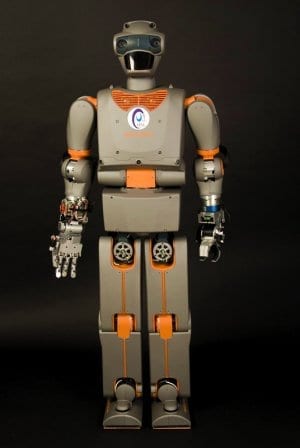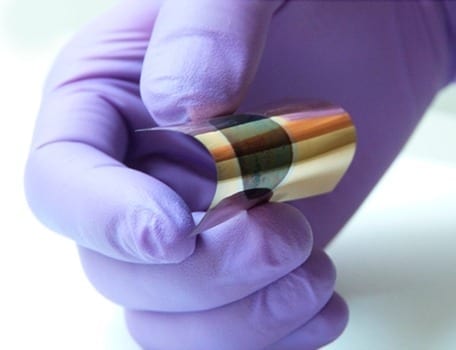
Our life expectancy lengthens and members of the ‘silver generation’ make up an ever-larger proportion of the population.
Can technologies help us in caring for ourselves, our older relatives and friends? Could we learn to live together with robots while being watched over by sensors? The people behind one EU research project certainly think so.
Our aging population is changing our society’s dynamics and our economy. By 2050 there will only be two (instead of 4) Europeans of working age for each person over 65, and within a decade Europe will need to care for an estimated 84 million people with age-related health problems.
There is an upside to this challenge, though. Collectively, Europe’s over-65’s have a disposable income of over EUR 3,000 billion and a substantial part of this will be ploughed back into the caring economy. According to Stephen Von Rump, CEO of Giraff Technologies AB, the EU market for robots and other devices that help taking care of our elderly will reach EUR 13 billion by 2016, and at least EUR 14.5 billion in the U.S.
The demand for care services has many countries stretched to the limit. That’s where technology can help. Says Mr Von Rump: ‘Today there are an estimated 5 million homes in the EU where elderly residents are receiving formal care services, and 12 million homes globally. Those numbers would more than double if one includes elderly who don’t receive formal care, but who (or whose families) would gladly pay for a telecare service if it would extend their time living at home.’
GIRAFF+ : A Robot Carer in your Home
GIRAFF+ is an EU research project to test how a network of sensors in cooperation with a robot can help older people live safer, more independent lives and enjoy social life from their home. The star of the system is Giraff, a telepresence robot. It moves around the person’s home and enable them to interact with family, friends and healthcare professionals via videoconference. The GIRAFF+ system comes with sensors throughout the home and in wearable devices. These sensors are designed to detect activities like cooking, sleeping or watching television, but they also provide medical information, like blood pressure and body temperature. They allow the person’s carers to remotely monitor their wellbeing and to check for falls. One of the users on the GIRAFF+ pilot, 94-year-old Lea Mina Ralli, wrote on her blog: ‘People ask why I don’t just live with my daughter, but she has grandchildren of her own and many new responsibilities. But with this valuable assistant that I call “Mr. Robin” I’m more relaxed about the years ahead, and so are my children and grandchildren.’
An Emerging Market in Caring Technology
‘The system will be installed into 15 homes by the end of 2014,’ says Amy Loutfi, the project coordinator. ‘So far we have had six homes in Europe – two homes each in Spain, Sweden and Italy – where people have lived with the GIRAFF+ system. We are currently in the middle of the evaluations, but we see that various aspects of the system are appreciated differently by the different users. This goes to show that there is no ‘one-size fits all’ approach to technology at home, and that the latter should be both adaptable and tailored to user’s needs.’
Current plans are to put the system in commercial production next year, based on an upfront fee and monthly subscriptions which would make it competitive when set alongside increasingly expensive full-time care.
The Latest on: Robot caregivers
[google_news title=”” keyword=”Robot caregivers” num_posts=”10″ blurb_length=”0″ show_thumb=”left”]
via Google News
The Latest on: Robot caregivers
- New revolutionary technology wants to give robots human-like skinon May 3, 2024 at 1:31 pm
ALBAWABA - Researchers at the University of Texas in Austin have created a first-of-its-kind flexible, electronic skin with nearly the same qualities as human skin, opening up new opportunities for ...
- Stretchable electronic skin for robots developed by UT researcherson May 3, 2024 at 12:23 pm
In the future, Lu said we’ll have more elderly people than available caregivers. She said that’s where these robots could step in. Lu said robots could also be deployed during disasters where there ...
- New 'e-skin' mimics human skin and could one day be used on robots, UT researchers sayon May 3, 2024 at 7:43 am
Robots and other technology can be used to provide care despite the limited availability of human caregivers. “In the future, if we have more elderly than available caregivers, it’s going to be a ...
- Stretchable e-skin could give robots human-level touch sensitivityon May 2, 2024 at 1:31 pm
A first-ever stretchy electronic skin could equip robots and other devices with the same softness and touch sensitivity as human skin, opening up new possibilities to perform tasks that require a ...
- Six Ways AI Can Help You Parent (and Five Ways It Won’t)on May 2, 2024 at 5:00 am
Obviously, AI can't take over for me as a parent either, but I was curious how the technology could help me with the job I don't get paid for: being a dad to two cool kids.I started doing some ...
- Best robot vacuum deals in May 2024on April 30, 2024 at 6:57 am
A robot vacuum can set you back a few hundred dollars. Fortunately, the best robot vacuum deals can help lower the cost of your robotic assistant. Currently, we're seeing some great sales on some ...
- WATCH: Chery reveals human-like robot driven by AIon April 30, 2024 at 5:44 am
Chery’s robot will be able to answer questions, respond to instructions and assist people in a natural and human-like way.
- Robots as caregivers – opportunities and riskson April 29, 2024 at 5:00 pm
But there are fewer and fewer caregivers to provide it. Can robots help reduce stress on staff in hospitals and care facilities?
- Enter Robots: Are We Ready?on April 25, 2024 at 11:09 am
The term “robot” suggests a human-like machine—a walking, talking automaton. Robotics is a much broader technology: Assembly robots in factories, warehouse workers, or surgical robots in ...
- Enter Robots, Are We Ready?on April 24, 2024 at 5:00 pm
The term “robot” suggests a human-like machine—a walking, talking automaton. Robotics is a much broader technology: Assembly robots in factories, warehouse workers, or surgical robots in ...
via Bing News










